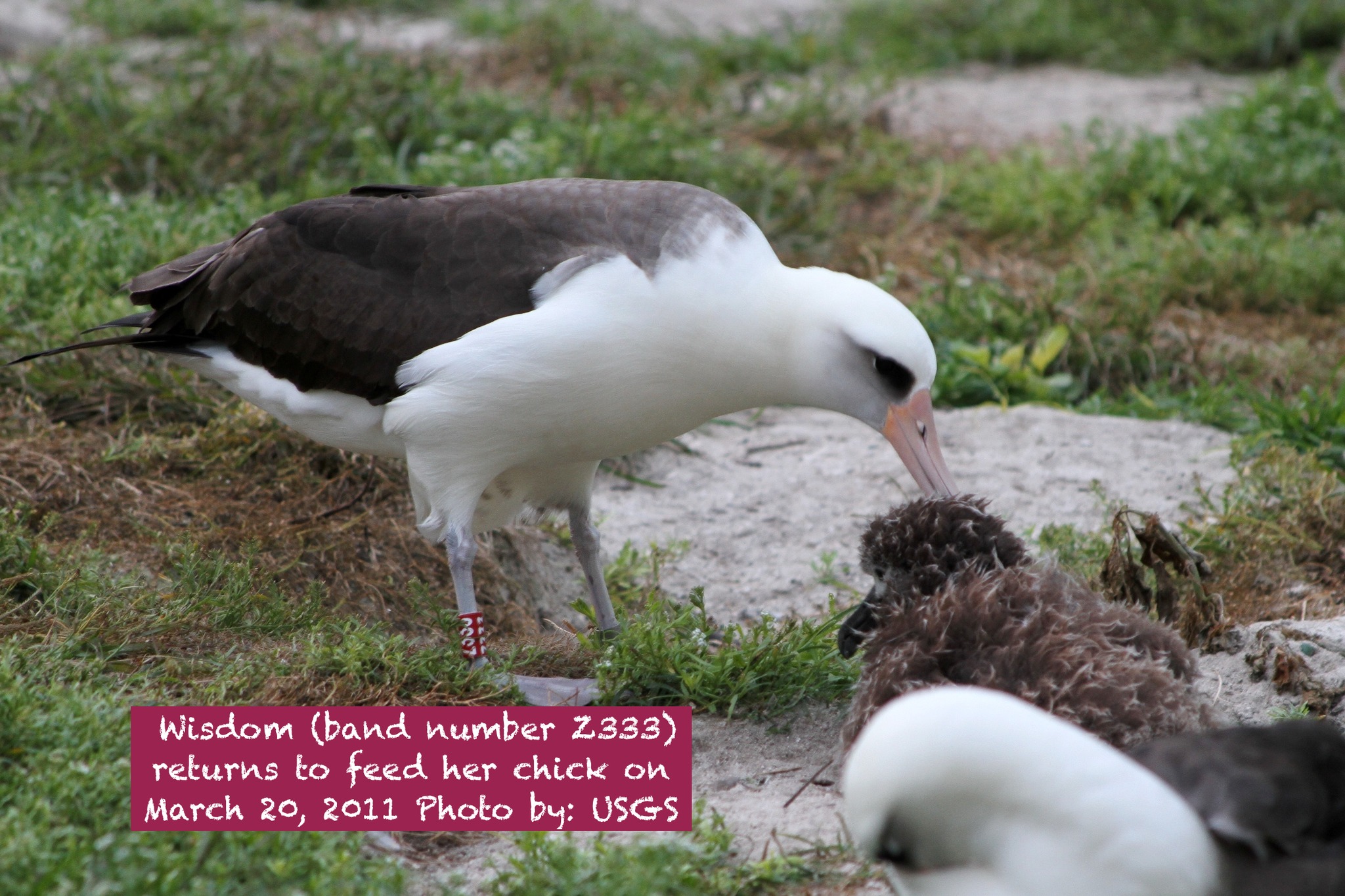
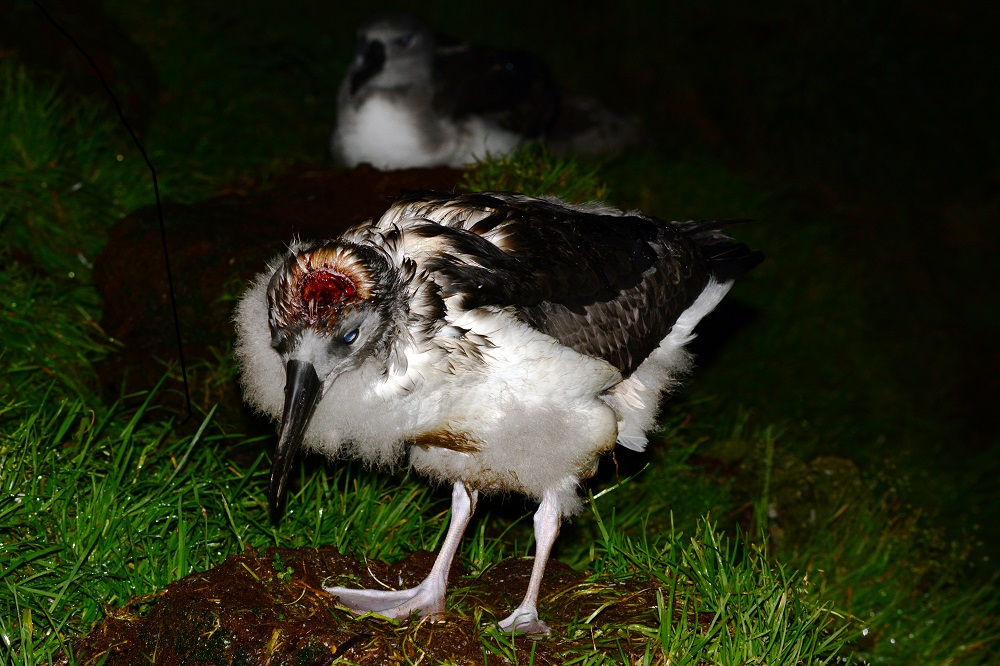
An Endangered Grey-headed Albatross Thalassarche chrysostoma chick has been scalped by mice on Marion Island: it will not survive; photograph by Ben Dilley
The Mouse-Free Marion Project aims to eradicate seabird-killing House Mice Mus musculus on South Africa’s sub-Antarctic Marion Island in the austral winter of 2024.
“Mice were accidentally introduced to Marion Island, most probably by sealers in the early 19th century, and have had a devastating impact on the ecology of the island. A warmer and drier climate over the last 30 years has contributed to an increase in the densities of mice on the island each summer, causing a shortage of invertebrates, upon which the mice had been surviving in the winter months. This shortage of food has driven mice to find alternative food sources. As on other oceanic islands, the mice found many of the seabirds had no defence against their attacks and were literally “sitting ducks”. The scale and frequency of attacks has been increasing since they were first observed in the early 2000s and have escalated dramatically in the last few years. Without immediate action, Marion Island’s seabirds face local extinction. Left unchecked, the mice are predicted to cause the local extinction of 18 of the 28 species of breeding seabirds currently found on the island, some within the next 30 years. Helicopters brought by sea across the ‘Roaring Forties’ from South Africa will spread rodenticide bait from underslung bait buckets in overlapping swathes across the entire island – the only method that has so far proven successful in eradicating rodents from large islands. At 30 000 hectares, Marion will be substantially larger than all previous rodent eradication efforts undertaken on islands in a single operation (click here).
At the same time as planning for the eradication progresses with the appointment of Project and Operations Managers, concerted efforts are being made to raise the considerable amount of funds required for such a big operation. A global approach is being taken, aided by the appointment of a USA-based Chief Philanthropy Officer to seek large donations. In addition, a ‘crowd-funding’ Sponsor a Hectare campaign is requesting South African Rand 1000 (or USD 70) a hectare to raise 30 million Rand towards the overall cost of the planned eradication.
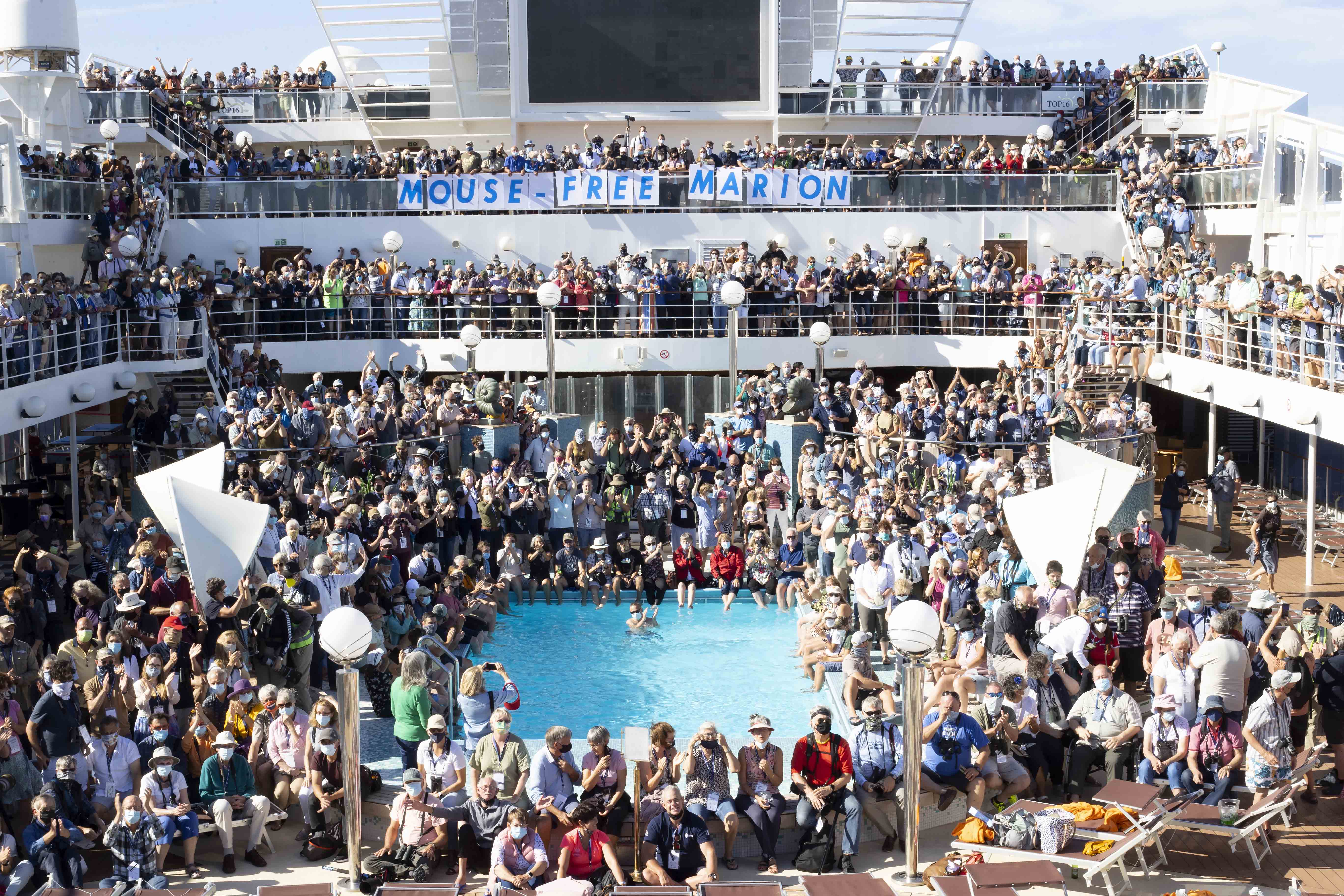
Flock to Marion birders gather on the MSC Orchestra’s pool deck to celebrate their sponsoring over 2200 hectares; photograph by Michael Mason/Mark Anderson
In the last month, the project has received a boost with two major donations totalling nearly four million Rand. First came news that 600 birders travelling on BirdLife South Africa’s Flock to Marion 2022 voyage, along with associated events, had raised over three million Rand, including sponsoring 2207 hectares of Marion Island, bringing the total sponsored to date to over 5000 hectares (click here).
Secondly, a donation of USD 55 000 from the Germany-based non-profit Caring for Conservation Fund, along with a personal sponsorship by its founders (who had travelled on the ‘Flock” cruise) has brought in 900 000 Rand (click here).
To learn more about the project, visit its recently redesigned website which gives information on ‘ways to give’ from its home page.
John Cooper, ACAP Information Officer, 04 March 2022

 English
English  Français
Français  Español
Español 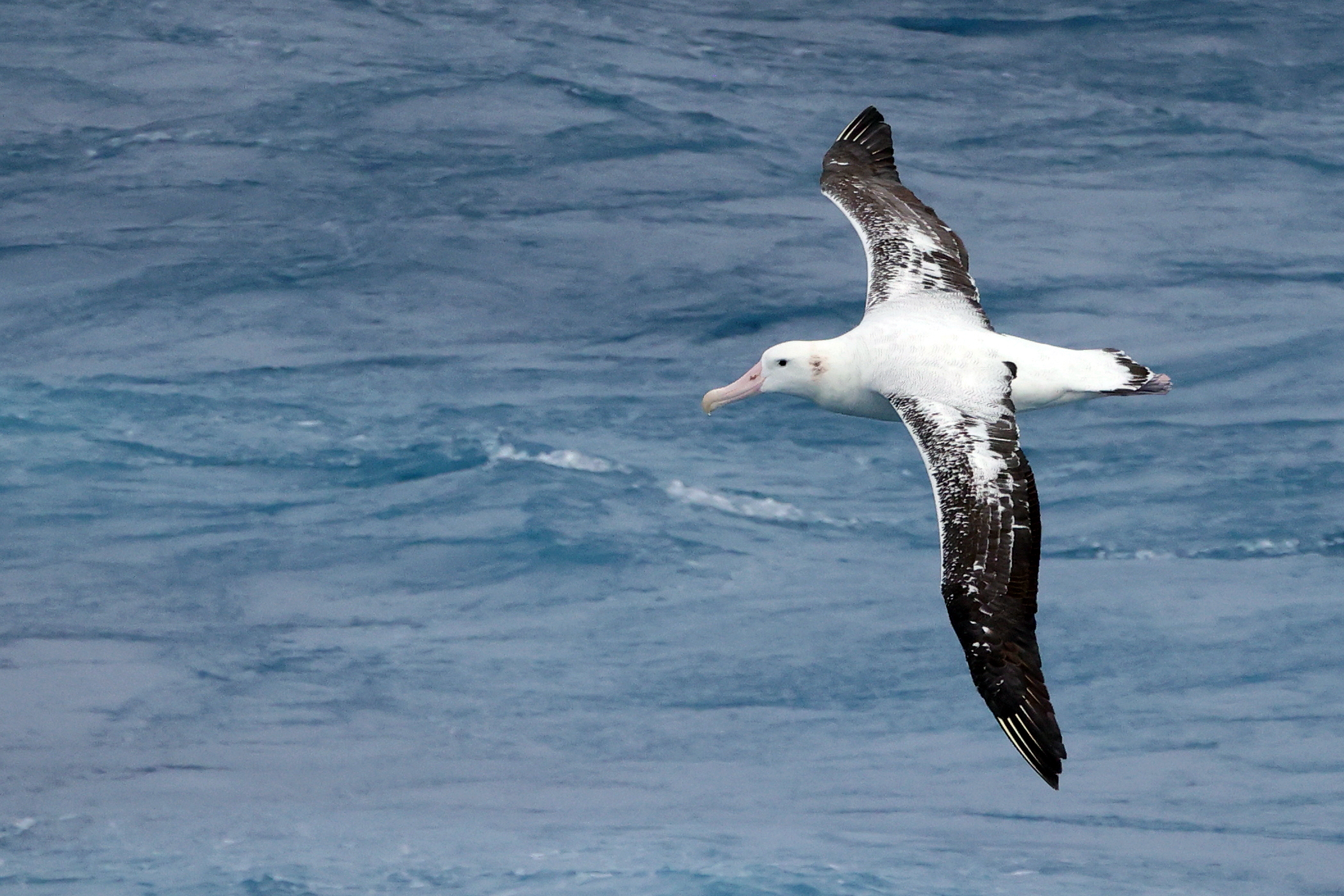 Wandering Albatross at sea near South Africa's Prince Edward Islands; photograph by Trevor Hardaker
Wandering Albatross at sea near South Africa's Prince Edward Islands; photograph by Trevor Hardaker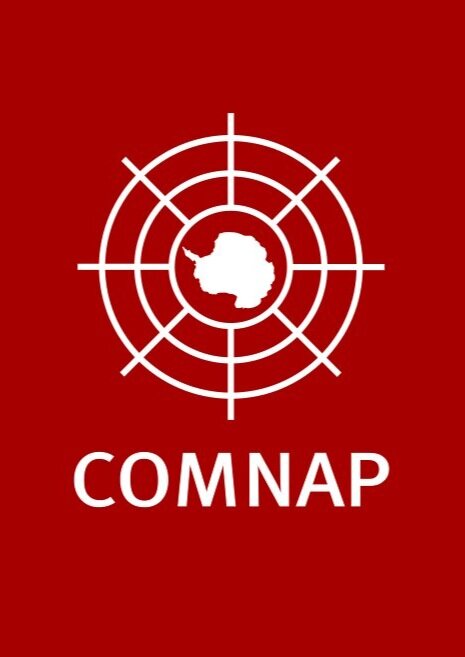
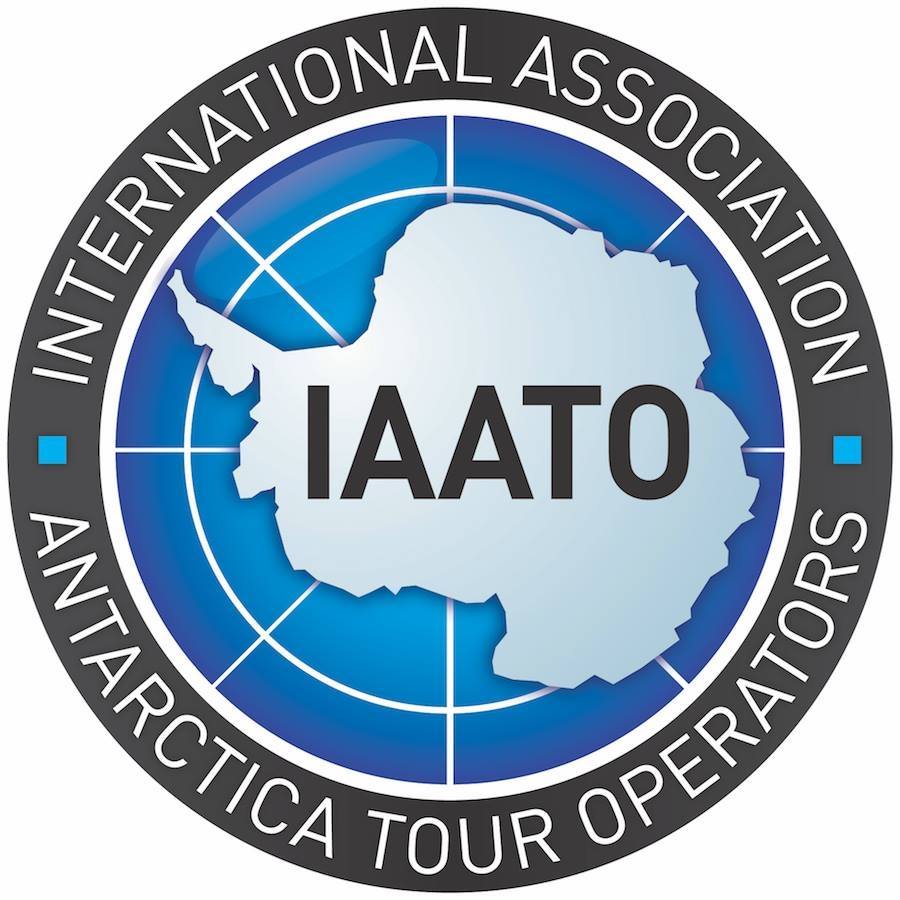

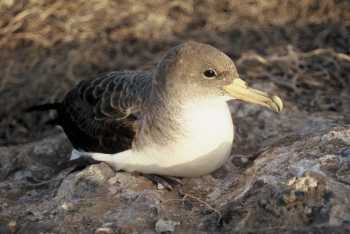

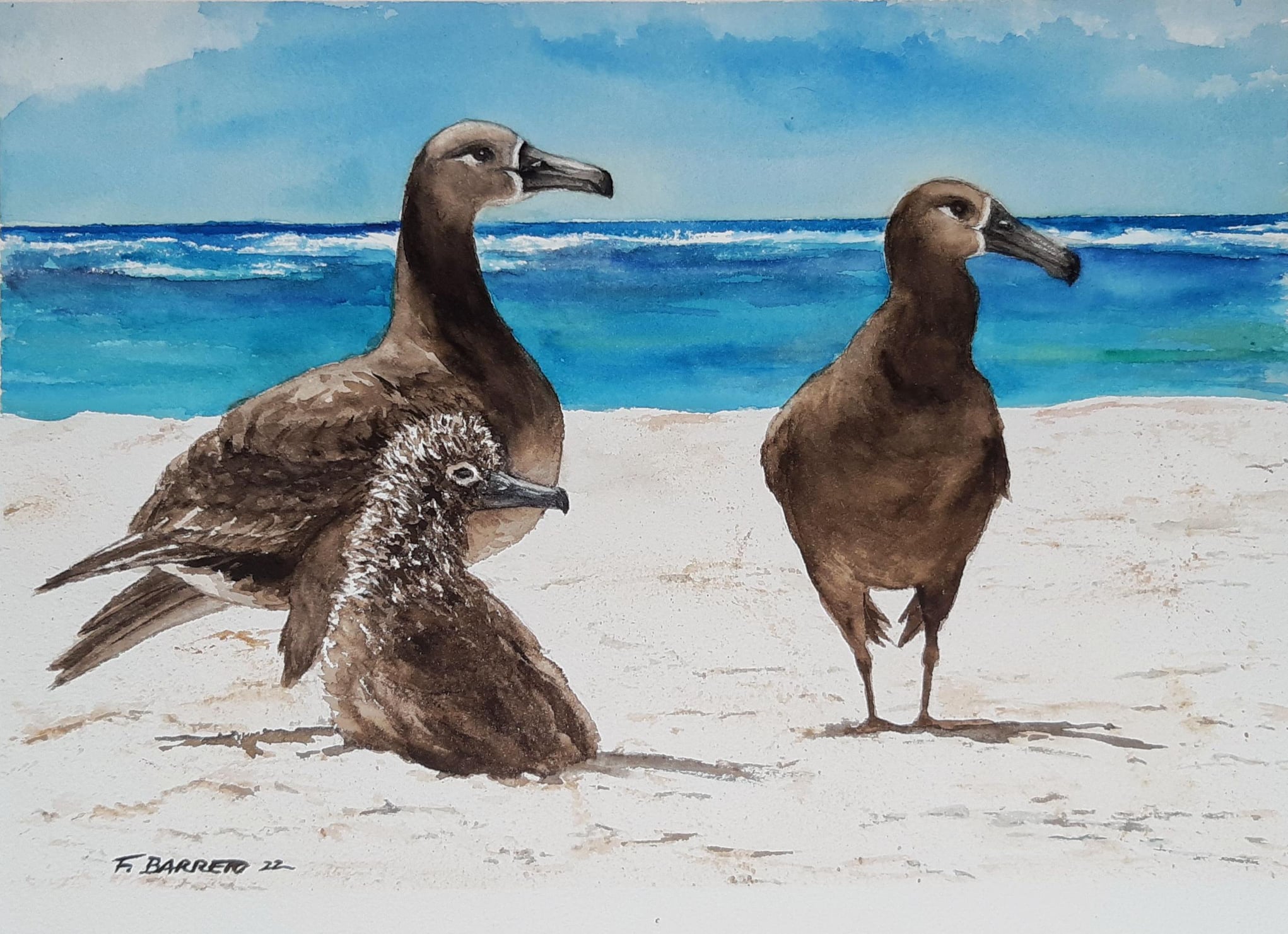
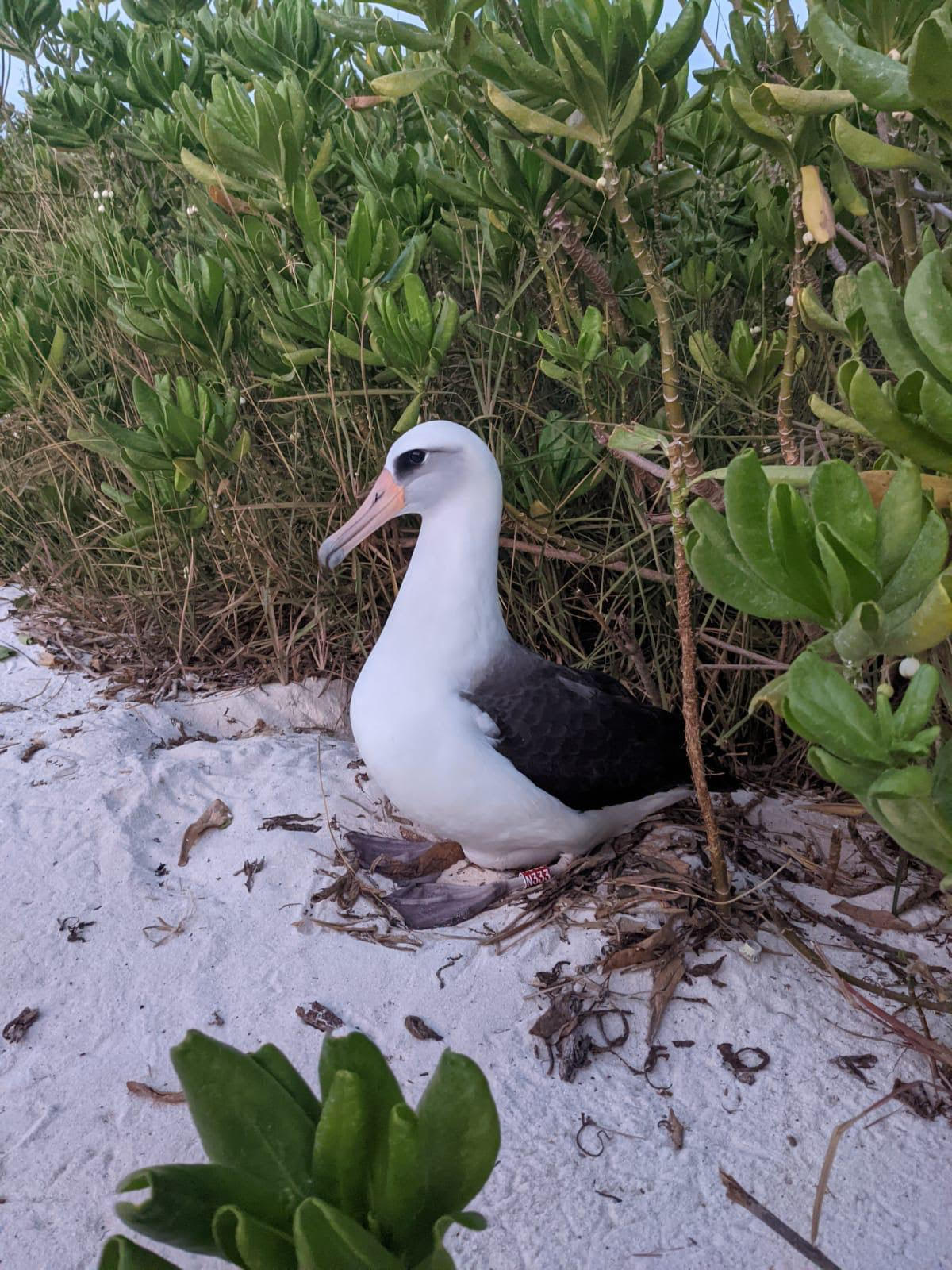 Wisdom's 2011 chick, marked with band number N333, survived the March 2011 tsunami on Midway Atoll and was sighted the first time on a nest of its own in December 2021, photograph by Dan Rapp
Wisdom's 2011 chick, marked with band number N333, survived the March 2011 tsunami on Midway Atoll and was sighted the first time on a nest of its own in December 2021, photograph by Dan Rapp
